Among the different types of eagles are the harpy eagle ( Harpia harpyja ), the golden eagle ( Aquila chrysaetos ), the Philippine eagle ( Pithecophaga jefferyi ), the bald eagle ( Haliaeetus leucocephalus ), among many other species. If you want to learn more about the different types of eagles that exist, then continue reading this interesting article from EcologíaVerde.

The harpy eagle ( Harpia harpyja ) is one of the most impressive birds in the world, as it can reach a wingspan of 2 meters and weigh up to 7 kilos . It lives in tropical and subtropical forests from southeastern Mexico to northeastern Argentina, with the exception of Chile. It feeds mainly on arboreal mammals such as monkeys , sloths, and coatis, although it can also prey on terrestrial species such as armadillos and weasels. It is a rare species with sporadic records due to its low reproductive rate, its extensive areas of action, and the loss of habitat caused by human activity.
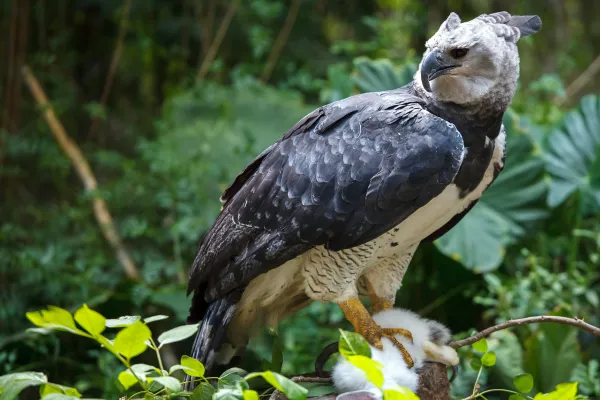
The golden eagle ( Aquila chrysaetos ) is a large cliff-dwelling raptor (up to 2.3 metres wingspan) and the largest of the Iberian species. It is distributed throughout the northern hemisphere in Eurasia and North America, with some populations in North Africa and southern Ethiopia. It builds its nests in rocky sites and also in trees. Its diet is diverse, as it may prey on mammals, birds, reptiles and even carrion. Adults are dark brown with golden tones on the front of the wings, the nape and the neck.
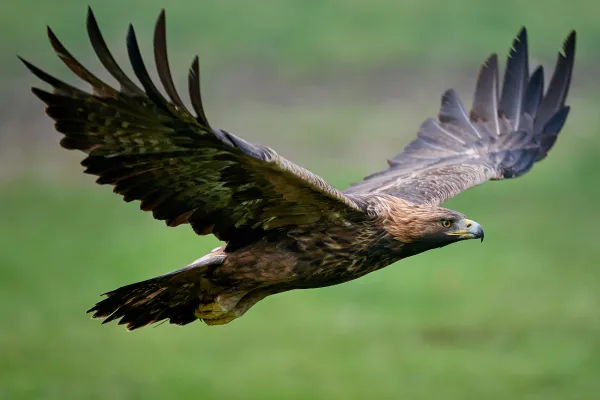
The national bird of the Philippines, endemic to the country, commonly known as the Philippine eagle ( Pithecophaga jefferyi ) is the largest raptor in the Philippine rainforests and one of the largest tropical eagle species. Its distinctive crest makes it unmistakable when perched. Its main prey is the Philippine flying lemur ( Cynocephalus volans ), but it will also feed on other mammals, birds, and reptiles. Unfortunately, according to the IUCN, it is critically endangered due to declining populations caused by deforestation.
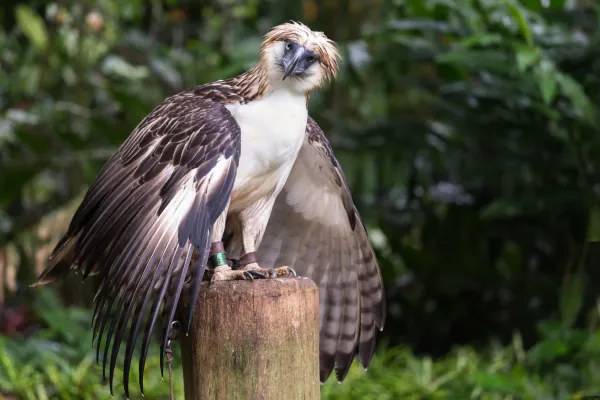
The bald eagle ( Haliaeetus leucocephalus ) is the emblematic bird of the United States. It inhabits diverse environments in North America, from southern Canada to Baja California Sur and Sonora, Mexico. Adults have a blackish-brown body , with a white head and tail , making it unmistakable. It feeds mainly on carrion and fish, which it hunts near bodies of water. It builds the largest nests of all bird species, which can reach up to 4 meters deep and 2.5 meters wide. They are generally solitary birds that spend long periods perched and motionless.
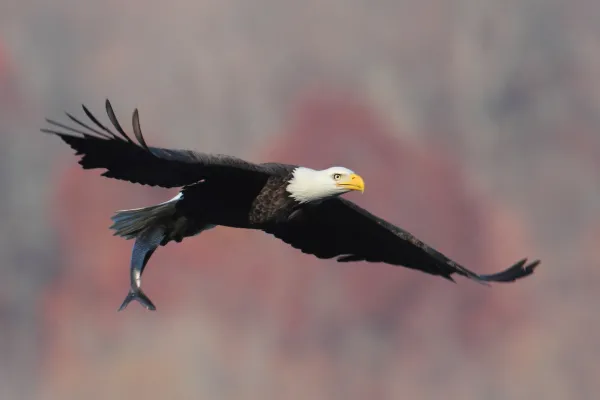
The osprey ( Pandion haliaetus ) has a very wide distribution, being found on every continent except Antarctica. As its name suggests, its diet is mainly fish . It can often be seen swooping down from great heights, its legs extended forward to capture its prey with its sharp talons. In flight, it is easy to identify by its long, narrow tail and angular wings . Did you know that in South America it is only a migratory bird and does not nest?

The common eagle ( Morphnus guianensis ), unique in its genus, is a large eagle found in humid rainforests and lowland gallery forests in Central and South America. It is smaller than the harpy eagle and, like it, hunts mammals, birds, and some reptiles, and builds its nests in trees. According to the IUCN, it is classified as "near threatened" , as its populations are declining at a moderate rate due to habitat loss from deforestation and land-use change.

Haliaeetus pelagicus , commonly known as the Steller's sea eagle, is found in coastal regions along the western Bering Sea, south to Paul Bay and around the Sea of Okhotsk. It winters as far south as Ussuriland, Korea and Japan. It is one of the heaviest eagles, averaging about 7.2 kg (15.6 lb) , and one of the largest, with a wingspan averaging 2.2 m (7 ft) .
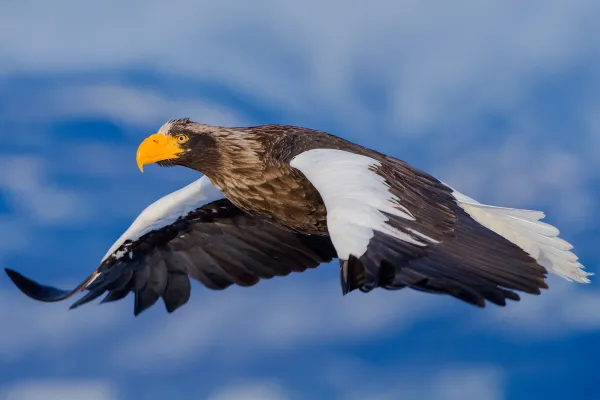
In Russia, it is threatened by habitat alteration resulting from the development of hydroelectric projects, large-scale projects in coastal and marine areas for the petrochemical industry, and logging. Industrial pollution of rivers and high levels of toxic compounds and heavy metals are other threats.
The African black eagle, Cape eagle or Verreaux's eagle (named after the French naturalist Edouard Verreaux) ( Aquila verreauxii ), is a bird of prey that lives in sub-Saharan Africa and the southern Arabian Peninsula. It usually builds its nests in mountainous areas where it feeds mainly on hyraxes (Procaviidae). Adults have dark plumage with a characteristic white "V" on their back . They can measure from 75 to 96 cm in length and weigh from 3 to 6.2 kg. The wingspan can reach 2.5 m.

The martial eagle ( Polemaetus bellicosus ) is one of the largest eagles in Africa and the only representative of its genus. Distributed in the wooded savannas, open woodlands, grasslands, and thorn scrub of central and southeastern Africa, it has a wingspan of between 188 and 227 cm. It is capable of capturing prey as large as jackals or small antelopes. Unfortunately, it is endangered due to direct persecution by farmers and other indirect threats such as electrocution and drowning in reservoirs.
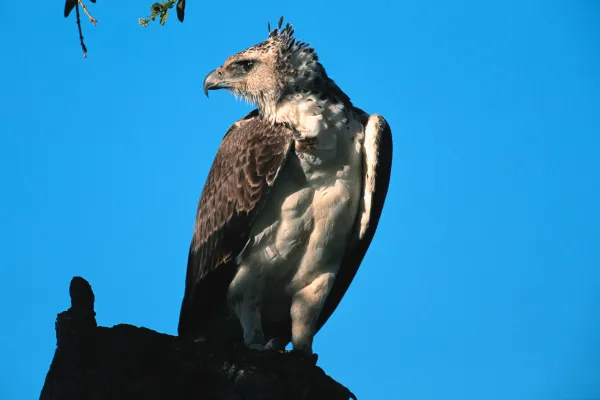
Haliaeetus albicilla, commonly known as the white-tailed eagle, is the largest bird in Europe . Adults have a brown body, while the head and neck are paler. The tail is white, and the beak and legs are yellow . The white-tailed eagle requires large open expanses of lakes, coasts or river valleys, within boreal, temperate and tundra zones , near cliffs or stands of large trees for nesting. It feeds on vertebrates such as fish, mammals and especially birds. It is mainly migratory in the north and east of its breeding range, wintering in continental Europe and southern Asia, but sedentary in the rest of the world.
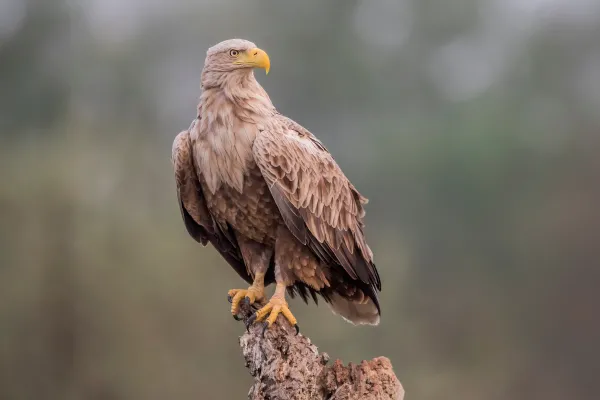
If you want to read similar articles to Types of Eagles , we recommend you visit our Wild Animals category .
IUCN (2024). The IUCN Red List of Threatened Species. Available at: https://www.iucnredlist.org
SEO/BirdLife. Available at: https://seo.org/
animal tags: eagles
We created this article in conjunction with AI technology, then made sure it was fact-checked and edited by a Animals Top editor.